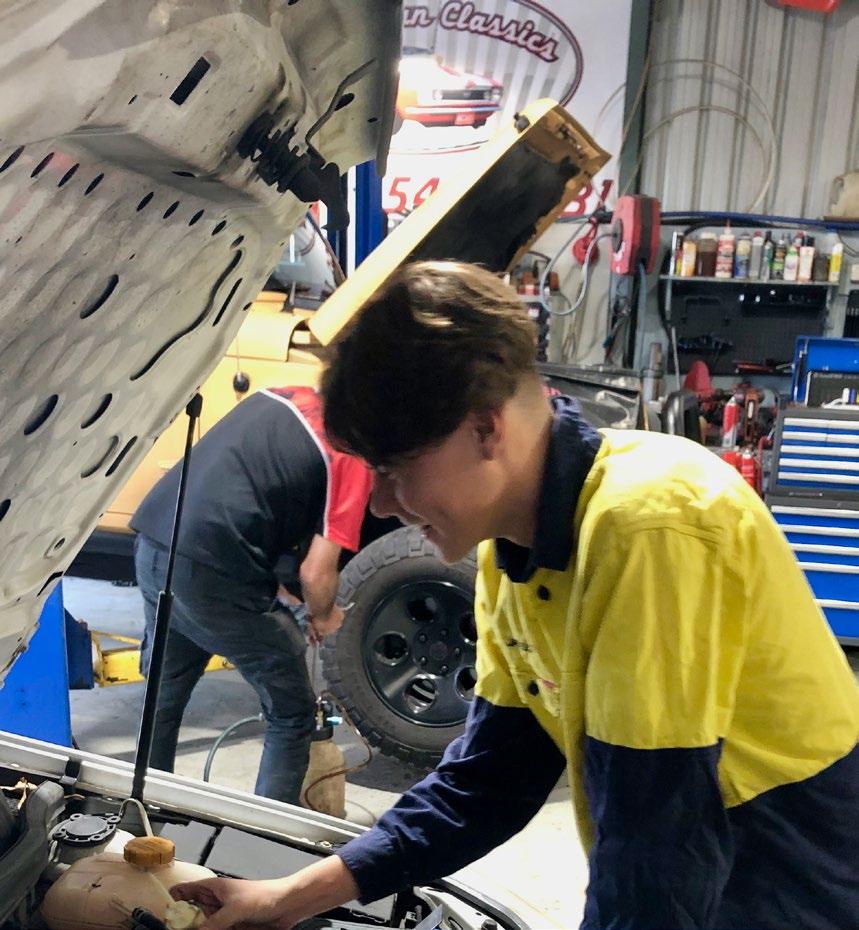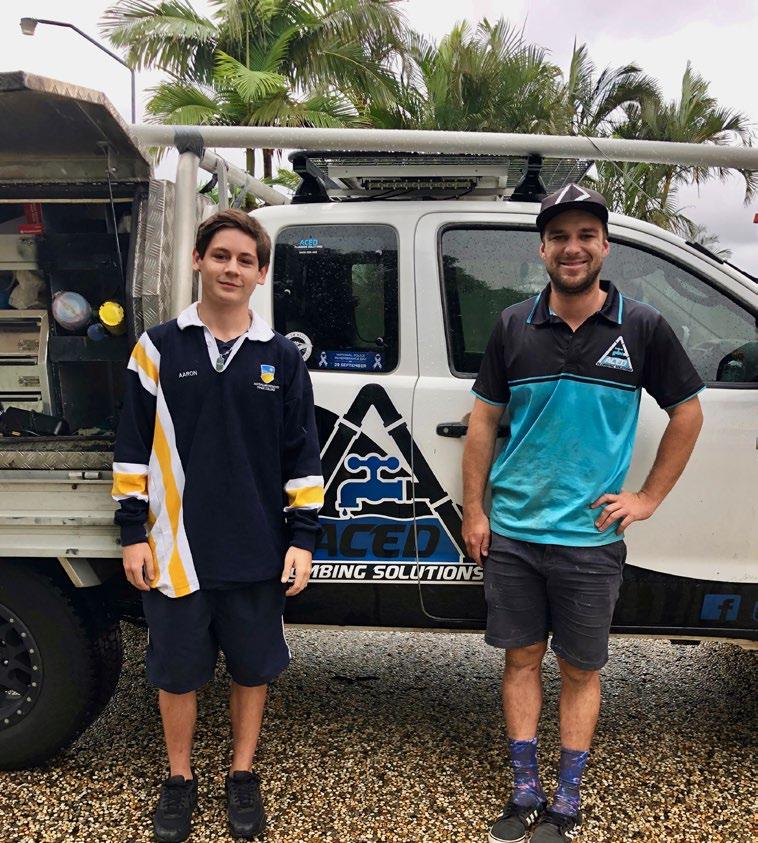
4 minute read
INNOVATORS AND ENTREPRENEURS
CREATING INNOVATORS + ENTREPRENEURS using design technologies
The point of difference at the AITC is how we develop and nurture Australia’s industry leaders in the classroom.
Redlands Team Leader, Rhys Cassidy, teaches Year 10 Design Technology students to develop crucial skills for future-proofing their career. By using Agile Project Management, our young people are being taught resilience, how to take risks, implement user feedback and create product-market fit. These are transferable skills that will allow young people to be entrepreneurs, intrapreneurs and innovators and add value to the businesses and industries they work in.
Having these transferable skills will future-proof young people who will need to adapt and be flexible in their changing work environment. There is a likelihood that automation/robots will impact on jobs in the next five to ten years. “Research from the Foundation for Young Australians also reveals that young people are going to have up to 17 or 18 jobs across five different careers,” explains Rhys. This means there is a necessity for young people to challenge themselves and adapt.
Rhys has been working towards challenging his Year 10 young people with a special redesign project. His Design Technology students are given a task to prototype and redesign something already existing in industry: a tool, piece of technology process, or item of equipment. “The focus is to redesign it in the context of the changing nature of industry due to things like Artificial Intelligence, automation, machine learning, block chain technology and 3D printing,” says Rhys.
At the beginning young people may come into the classroom with a very small range of ideas of what’s available to them. “We want to push them outside that initial context with the idea that their job may change considerably. One of my big focuses is to get them to be as self-directed in their learning as possible. I want them to develop the ability to learn, and continue to learn, and to understand how they learn. This is so they can continue to upskill and retrain themselves and be hungry for that further learning—so they’re not standing still.”
“I want them to see there are a whole range of possibilities,” says Rhys. “There are many things we cannot predict in terms of technology advancements; therefore, we need to be agile in our approach.” Design allows a different thinking process in the creation of this particular project. “We use Agile Project Management (for self-directed learning) and students use a Kanban board to manage their project over the term.” They brainstorm and do the initial design, receive feedback from users, organise user research via interviews and surveys. They take that feedback to redesign their project. Then they create a prototype and make a 3D model using SketchUp. Then they refine the idea after more feedback.
Young people use a design thinking framework from the State Library of Queensland called ‘Design Minds’, which is: Inquire, Ideate, Implement and constantly reflect. “This allows young people to enter or exit that design cycle at any point as it’s not a linear process,” explains Rhys. “They may need to change their design, create ideas, organise a prototype for hands-on learning. In Design they can prototype with various materials so they can see something come to life, show someone, get some feedback and make changes.”
Many subjects at the AITC are integrated across other subjects.
EDUCATING TOMORROW’S INDUSTRY LEADERS
blueprint australian industry trade college
For this particular project students completed one piece of assessment. However due to its complexity, “it met the requirements for both Literacy and Design Technologies and was a richer assessment/learning experience for them.” During their Literacy time students conducted deeper research about changes happening in industry.
“At the end of the day there are over 500 different traineeships and apprenticeships and different industry pathways that are available,” says Rhys. As Team Leaders, we need to make sure they’re not going to have a “narrow view of their options or limit themselves.”
It’s about expanding career horizons. “For example, a student may be thinking about carpentry but in actual fact they have a remarkable ability in 3D modelling. That young person may also love video games, so they have the tools which will allow them to design things that could potentially be used in video games. These skills could also be used in engineering or to improve processes in manufacturing. These kinds of transferrable skills can be taken into a range of different industries.”
“The great thing we’re doing at the AITC is we start exploring work options and the interests of our young people as early as possible. With this experience in different areas they can get a sense of the things they enjoy and recognise the things they’re really good at.”
Their confidence changes considerably when they are given different technology challenges. “They come in and often they’re not confident with sketching for example,” explains Rhys. “My whole idea for this course is to build their skills — so they can go from a back-ofthe-napkin basic sketch to a 3D model using SketchUp. Then they can take this 3D model into virtual reality and show this to potential users in an immersive environment.”
It’s important for young people to find different avenues in software applications. “We are asking them to be constantly mindful of the different technologies that are available. We promote the possibility of looking for new solutions. The 3D modelling and design integration are great hard skills they can develop. In the classroom we also “focus on transferrable soft skills such as being a self-directed learner, being able to teach themselves and learning from others quickly. It’s important to remain open to learning new things.”






